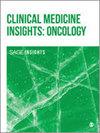MiR-339-5p Inhibits Ferroptosis by Promoting Autophagic Degradation of FTH1 Through Targeting ATG7 in Liver Cancer Cells
IF 1.9
4区 医学
Q3 ONCOLOGY
引用次数: 0
Abstract
Background:Liver cancer has a high incidence and mortality rate worldwide, and there is an urgent need to identify new therapeutic strategies and predictive targets to improve the clinical outcomes of advanced liver cancer. Ferroptosis holds promise as a novel strategy for cancer therapy. Epigenetic dysregulation is a hallmark of cancer, and noncoding RNAs are tightly involved in cell fate determination. Therefore, we aimed to identify a novel ferroptosis regulator from aberrantly expressed microRNAs that may serve as a novel biomarker and therapeutic target for liver cancer.Methods:The expression signature and prognostic value of miR-339 was assessed using TCGA data set. The role of miR-339/ATG7/FTH1 axis in liver cancer cells were evaluated through growth curve, colony formation, 7-AAD staining. The role of miR-339 in regulation of ferroptosis was determined by immunofluorescence staining, flow cytometry, and Elisa kits.Results:Here, we showed that miR-339 is aberrantly overexpressed in patients with liver cancer. In addition, miR-339 inhibition dramatically suppresses liver cancer progression. Furthermore, miR-339 silencing drives cell death and inhibits liver cancer progression, indicating that miR-339 may serve as a novel ferroptosis suppressor. Mechanistically, we demonstrated that miR-339 targets ATG7 to facilitate the autophagic degradation of FTH1 and prevent ferroptosis in liver cancer cells.Conclusions:We provide important evidence that the miR-339 inhibition activates of the autophagy pathway to promote ferroptosis by degrading FTH1 in liver cancer cells. We found that miR-339 regulates the balance between ferroptosis and autophagy in liver cancer cells.MiR-339-5p 通过靶向 ATG7 促进肝癌细胞中 FTH1 的自噬降解从而抑制铁凋亡
背景:肝癌在全世界的发病率和死亡率都很高,因此迫切需要确定新的治疗策略和预测靶点,以改善晚期肝癌的临床预后。铁突变有望成为一种新型的癌症治疗策略。表观遗传失调是癌症的特征之一,而非编码 RNA 与细胞命运的决定密切相关。因此,我们旨在从异常表达的microRNA中发现一种新型铁突变调节因子,它可作为肝癌的新型生物标志物和治疗靶点。通过生长曲线、集落形成、7-AAD染色评估了miR-339/ATG7/FTH1轴在肝癌细胞中的作用。结果表明,miR-339在肝癌患者中异常过表达。此外,抑制 miR-339 能显著抑制肝癌的进展。此外,miR-339 的沉默可促使细胞死亡并抑制肝癌的进展,这表明 miR-339 可能是一种新型的铁突变抑制因子。结论:我们提供了重要证据,证明抑制 miR-339 可激活自噬途径,通过降解肝癌细胞中的 FTH1 促进铁氧化。我们发现,miR-339 可调节肝癌细胞中铁蛋白沉降和自噬之间的平衡。
本文章由计算机程序翻译,如有差异,请以英文原文为准。
求助全文
约1分钟内获得全文
求助全文
来源期刊

Clinical Medicine Insights-Oncology
Medicine-Oncology
CiteScore
2.40
自引率
4.50%
发文量
57
审稿时长
8 weeks
期刊介绍:
Clinical Medicine Insights: Oncology is an international, peer-reviewed, open access journal that focuses on all aspects of cancer research and treatment, in addition to related genetic, pathophysiological and epidemiological topics. Of particular but not exclusive importance are molecular biology, clinical interventions, controlled trials, therapeutics, pharmacology and drug delivery, and techniques of cancer surgery. The journal welcomes unsolicited article proposals.
 求助内容:
求助内容: 应助结果提醒方式:
应助结果提醒方式:


